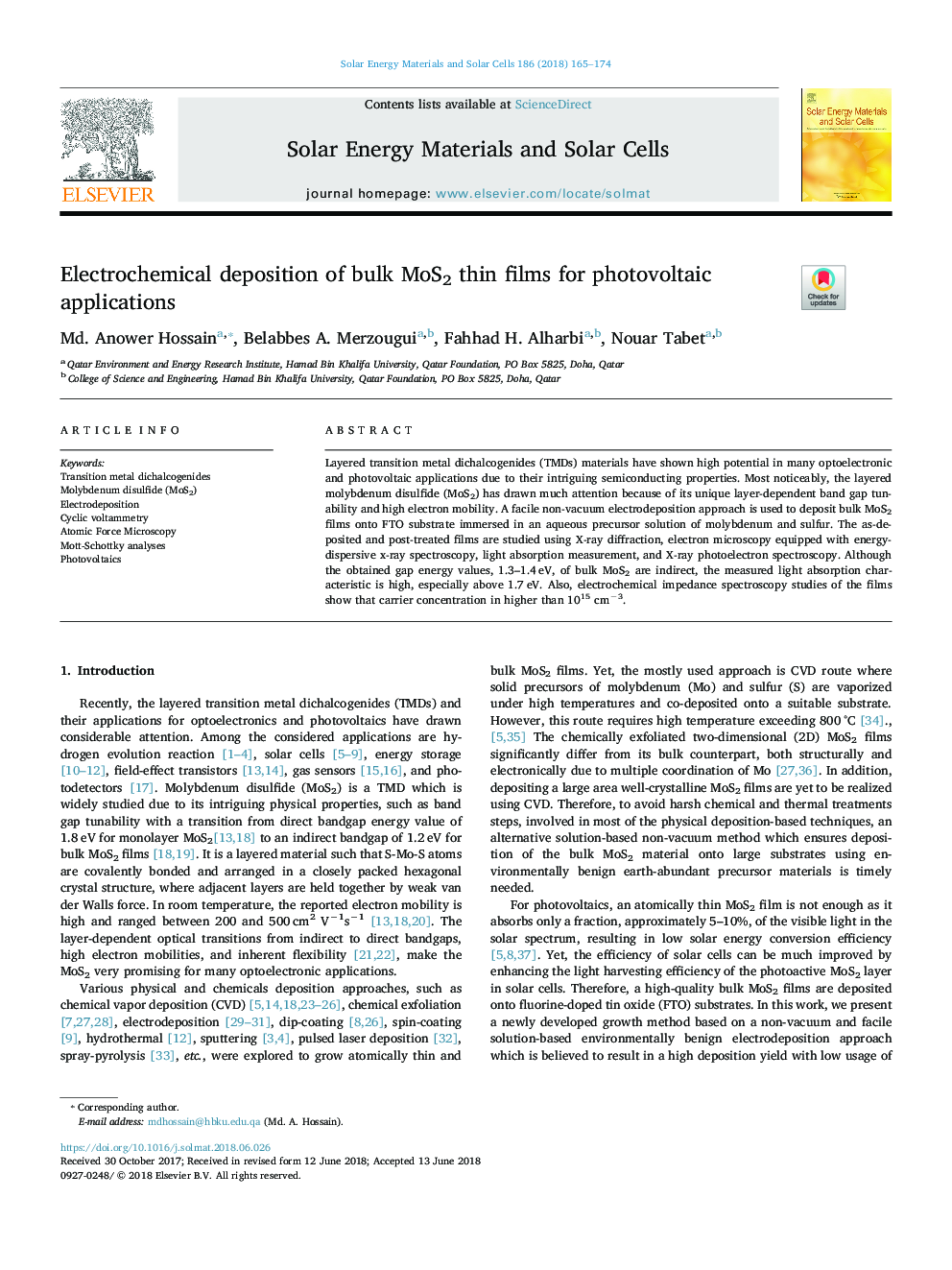| Article ID | Journal | Published Year | Pages | File Type |
|---|---|---|---|---|
| 6533874 | Solar Energy Materials and Solar Cells | 2018 | 10 Pages |
Abstract
Layered transition metal dichalcogenides (TMDs) materials have shown high potential in many optoelectronic and photovoltaic applications due to their intriguing semiconducting properties. Most noticeably, the layered molybdenum disulfide (MoS2) has drawn much attention because of its unique layer-dependent band gap tunability and high electron mobility. A facile non-vacuum electrodeposition approach is used to deposit bulk MoS2 films onto FTO substrate immersed in an aqueous precursor solution of molybdenum and sulfur. The as-deposited and post-treated films are studied using X-ray diffraction, electron microscopy equipped with energy-dispersive x-ray spectroscopy, light absorption measurement, and X-ray photoelectron spectroscopy. Although the obtained gap energy values, 1.3-1.4â¯eV, of bulk MoS2 are indirect, the measured light absorption characteristic is high, especially above 1.7â¯eV. Also, electrochemical impedance spectroscopy studies of the films show that carrier concentration in higher than 1015 cmâ3.
Keywords
Related Topics
Physical Sciences and Engineering
Chemical Engineering
Catalysis
Authors
Md. Anower Hossain, Belabbes A. Merzougui, Fahhad H. Alharbi, Nouar Tabet,
